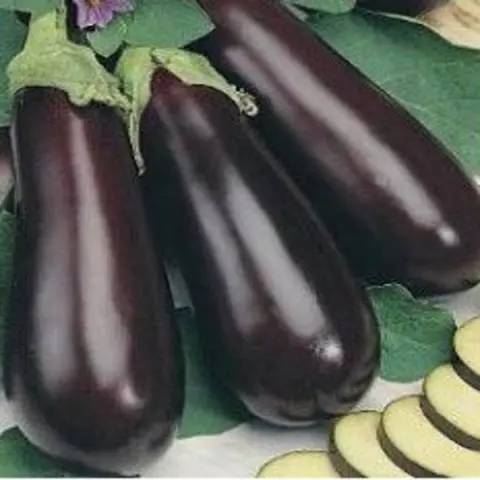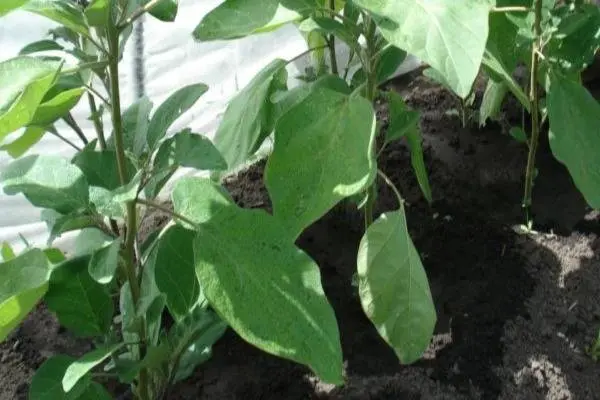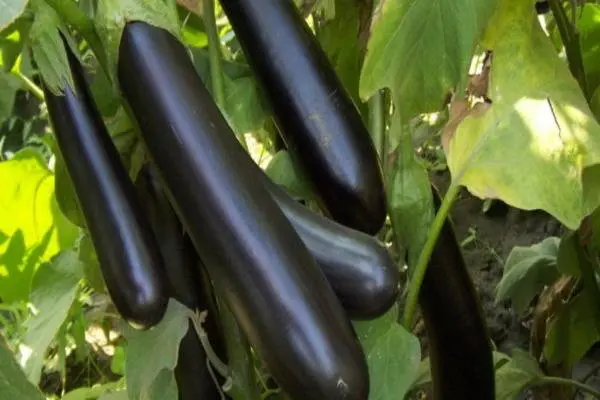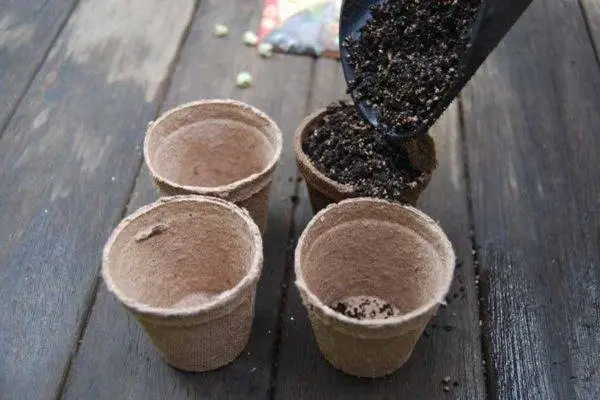Contents
More and more gardeners are planting eggplant in garden plots. And a significant role in this was played by breeders who offer a variety of new varieties. Eggplant Giselle F1 perfectly tolerates hot and dry weather and ripens well in the difficult conditions of the northern regions. When growing a crop, it is important to follow the rules for caring for a vegetable.
Characteristics of the hybrid
Early ripe eggplant Giselle F1 refers to hybrids. The variety is high-yielding, bushes with large leaves grow up to 120-125 cm high in open ground and up to 2 m in a greenhouse. The eggplant stalk Giselle is slightly prickly. After seed germination, it is possible to harvest after 107-116 days.
Fruits ripening weighing up to 400-500 g have a dark purple color and a skin with a smooth surface (as in the photo). The shape of the eggplant is cylindrical, dimensions: length 25-31 cm, diameter about 7 cm. Bitterness is not typical for the delicate pulp of a light shade. The seeds are small. Plucked Giselle eggplants retain their excellent appearance and taste for about a month.

When growing the Giselle F1 variety in a greenhouse, you can collect more ripe fruits than from an open area: 11,7-17,5 kg / sq. m and 7-9 kg / sq. m respectively.
Growing eggplant
Since the variety is a hybrid, it is recommended to purchase seed from manufacturers for breeding. It is best to plant seedlings on the site than seeds. Therefore, from the second half of March, you can start sowing.
Seed sowing
- Pre-eggplant grains of the Giselle variety are soaked in a growth stimulator. Suitable drugs: Epin, Zircon. The cloth is soaked in the solution and the seeds are wrapped in the damp cloth.
- As soon as the seeds hatch, they are planted in pots / containers. As a soil mixture, it is better to use ready-made store soil. Holes for seeds are made shallow – 0,8-1 cm. The grains are placed in moistened ground and lightly sprinkled. So that the soil does not float when watering, it is better to just sprinkle it.

- The cups are covered with plastic wrap to prevent the soil from drying out quickly. All containers are placed in a warm place.
- When the first sprouts of the Giselle variety appear, you can remove the film and transfer the cups to a lighted place without drafts. To prevent pulling seedlings, install additional lighting.
To do this, the containers are taken outside for a short time. The time spent outdoors is increased gradually.
It is recommended to fertilize twice. When real leaves grow, the soil is enriched with potassium nitrate (10 g of the mixture is dissolved in 30 liters of water) or Kemira-Lux is used (it is enough to add 10-25 g of the drug per 30 liters). The second time fertilizers are applied one and a half weeks before planting seedlings. You can use “Crystal” (20 g per 10 liters of water).
Planting seedlings
Giselle F1 eggplant seedlings are transplanted to the site in late May-early June, as soon as the seedlings grow 6-7 true leaves. The beds for vegetables are prepared in advance – the soil is loosened, cleared of weeds.

The layout of the holes: the distance between the rows is 65-70 cm, between the bushes – 30-35 cm. The best option is if 4-5 eggplants grow per square meter of soil.
If the size of the plot is modest, then seedlings can be planted more densely in open ground. It is impossible to place seedlings more closely in the greenhouse, otherwise this may lead to a decrease in yield.

It is highly undesirable to use plots after potatoes, since vegetables belong to the same family, are damaged by the same type of pests and have similar requirements for soils.
Watering and top dressing
It is recommended to use warm water to moisten the soil. It is better to water the Giselle F 1 eggplants in the morning or in the evening, while avoiding water on the leaves. To do this, some gardeners dig grooves along the beds into which water is poured. At the same time, the soil at the roots is evenly moistened, and water does not fall on the leaves and stems of the Giselle eggplant. When the air temperature drops, the intensity of irrigation is reduced. Otherwise, high humidity will contribute to the emergence and spread of diseases.

For a greenhouse, the optimum humidity level is 70%. With an increase in temperature and humidity, plants may experience overheating. Therefore, it is recommended to ventilate the greenhouse in time. Before the plants bloom, the beds are watered once a week. During periods of flowering, fruit formation and ripening, it is advisable to water the Giselle eggplant twice a week. Also, the frequency of watering increases during extreme heat.
Since the root system of plants is not deep, it is necessary to loosen the soil very carefully.
To prevent the formation of a crust on the surface of the soil, a watering can with a special nozzle is used to water the eggplants.
It is important to apply root dressing during the period of flowering and fruiting of Giselle eggplant varieties:
- during flowering, mineral fertilizers are added (20-30 g of ammofoska are dissolved in 10 liters of water). Gardeners who prefer organic top dressing can use a solution of 10 liters of water, a tablespoon of wood ash, a liter of mullein, 500 g of nettle. Before using the solution, the mixture should be infused for a week;
- when the fruits begin to ripen on the bushes, it is recommended to use a solution of mineral fertilizers (10-60 g of urea, 75-60 g of superphosphate and 75 g of potassium chloride are taken per 20 liters of water).
When growing eggplants of the Giselle variety, weather conditions must be taken into account. In the cloudy and cool season, plants especially need potassium. The best solution is to pour wood ash onto the soil (at the rate of 1-2 cups per square meter).
When growing eggplant, it is not recommended to use foliar top dressing of the crop. If a mineral solution accidentally gets on the leaves, then it is washed off with water.
Harvesting
Shading is not allowed during the flowering period. Therefore, the upper leaves, which limit the flow of light to the flowers, are carefully removed. Since eggplants ripen gradually, ripe fruits should not be left on the bushes. Giselle eggplants are cut along with the calyx and part of the stalk. Removing ripe vegetables stimulates the formation of new ovaries, so it is recommended to harvest every 5-7 days.
Finish harvesting ripe eggplants before the first autumn frosts. If unripe fruits remain on the bushes, then the plant is completely dug out. You can fold the bushes in the greenhouse and water. As a rule, after two or three weeks, Giselle eggplants reach technical maturity.
Since the fruits of this culture do not have a long shelf life, it is recommended to follow some rules that will ensure the safety of eggplant:
- harvested crops are stored in a dark, cool room. Optimal parameters: air temperature + 7-10˚ С, humidity 85-90%;
- in rooms with low temperatures + 1-2˚ C and relative humidity of 80-90%, eggplants can be stored for 21-25 days. Moreover, the fruits should lie in the dark, otherwise corned beef is formed in the light in overripe vegetables, which leads to a deterioration in taste. The effect of solanine can be minimized by heat treatment of eggplant;
- unripe Giselle fruits without damage are suitable for storage in the refrigerator;
- when folding the crop on the balcony, it is recommended to use dark packaging. Open plastic bags or thick paper will do;
- in the basement, the harvest can be put in boxes, sprinkling the fruits with wood ash.
Eggplant is an excellent vegetable containing many vitamins and minerals. The fruit is perfectly preserved and is used in the preparation of many dishes. Therefore, it is not surprising that more and more summer residents are trying to plant a crop on the site.










